WAVERLY, Va. — On a cloudy day, Rebecca Wilson strolled along a sandy path at a nature preserve brimming with young longleaf pine — a peculiar tree with long green needles and a taste for fire.
Reaching up to the middle of one, she pulled down a branch and spread some needles. She was eager to show off something special: A handful of purple buds popping up.
These male flowers, she said, are called catkins, which produce large amounts of pollen. It's a sign that the state could once again see new native, cone-bearing pines in the coming years.
“It’s impossible not to fall in love with longleaf,” she said at Chub Sandhill, an agriculture-field-turned-rare-plant paradise teeming with the trees.
"They're just a really cool tree. They do so many cool things. They look cool. They grow in cool places. They have cool plants underneath. They have cool birds in them."
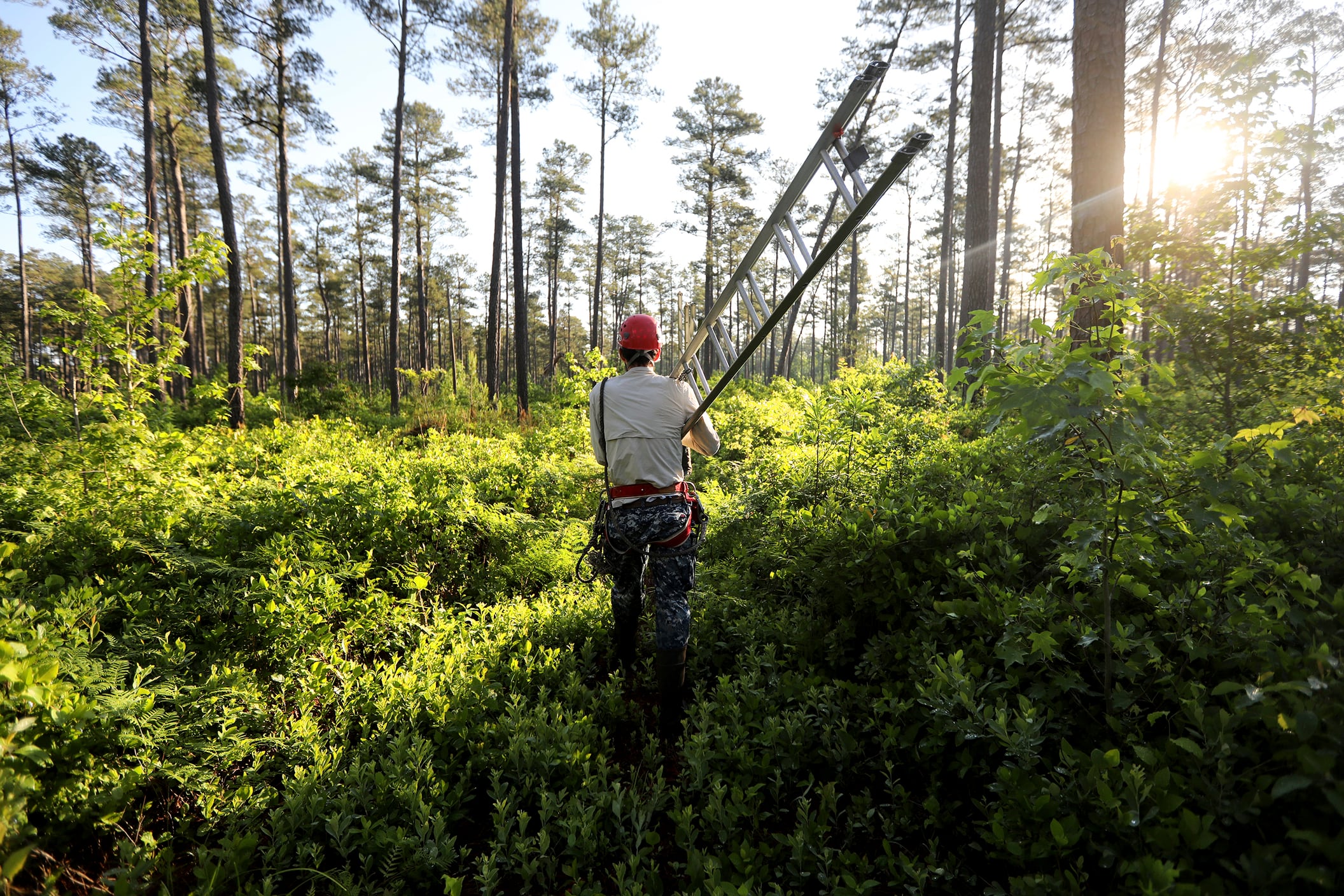
It is clear that even after two decades working on the preserve in Sussex County, the state’s longleaf recovery specialist is still enamored with the historic tree.
Integral to Virginia's history, the pine once dominated most of the region.
For decades, though, the longleaf has been struggling to survive in an environment no longer suited for it. The pine, which thrives under regular burn cycles, stopped getting the necessary fire treatment when earlier residents started extinguishing the blazes that would have killed off competition. And timber companies harvested the longleaf until the tree largely vanished.
At the turn of the century, fewer than 200 such mature conifers remained in Virginia.
In turn, the population of red-cockaded woodpeckers plummeted with the loss of that habitat. Now federally endangered, one could just about count the remaining birds in the state on two hands.
But a group of conservationists from multiple agencies are on a mission to save the state's so-called "Founding Forest" and with it, the state's most scarce bird.
When Christopher Newport, the namesake of the city of Newport News, first landed on Cape Henry in 1607, some say he could have traveled into eastern Texas and never lost sight of the longleaf pine, which can live for roughly 400 years.
It thrives in a southern pine savanna — a sandy, dry environment that frequently burns. It's more grassland than a forest. Looking up, the canopy blocks little of the sky.
The habitat supports a diverse suite of wildlife. One of the iconic species is the red-cockaded woodpecker, a black-and-white bird named for the male's flash of red feathers.
They're one of the few woodpeckers that nest in live trees, making longleaf pines a perfect match. When the conifers reach maturity, they are more susceptible to infection from red heart fungus, which decays the heartwood of living pines. That makes it an ideal feeding ground for woodpeckers, which excavate the cavities in live trees.
In Virginia alone, estimates show there were roughly 1 million acres of the evergreen at the time of European settlement. The red-cockaded woodpecker was the most common bird of its kind in the region, experts said.
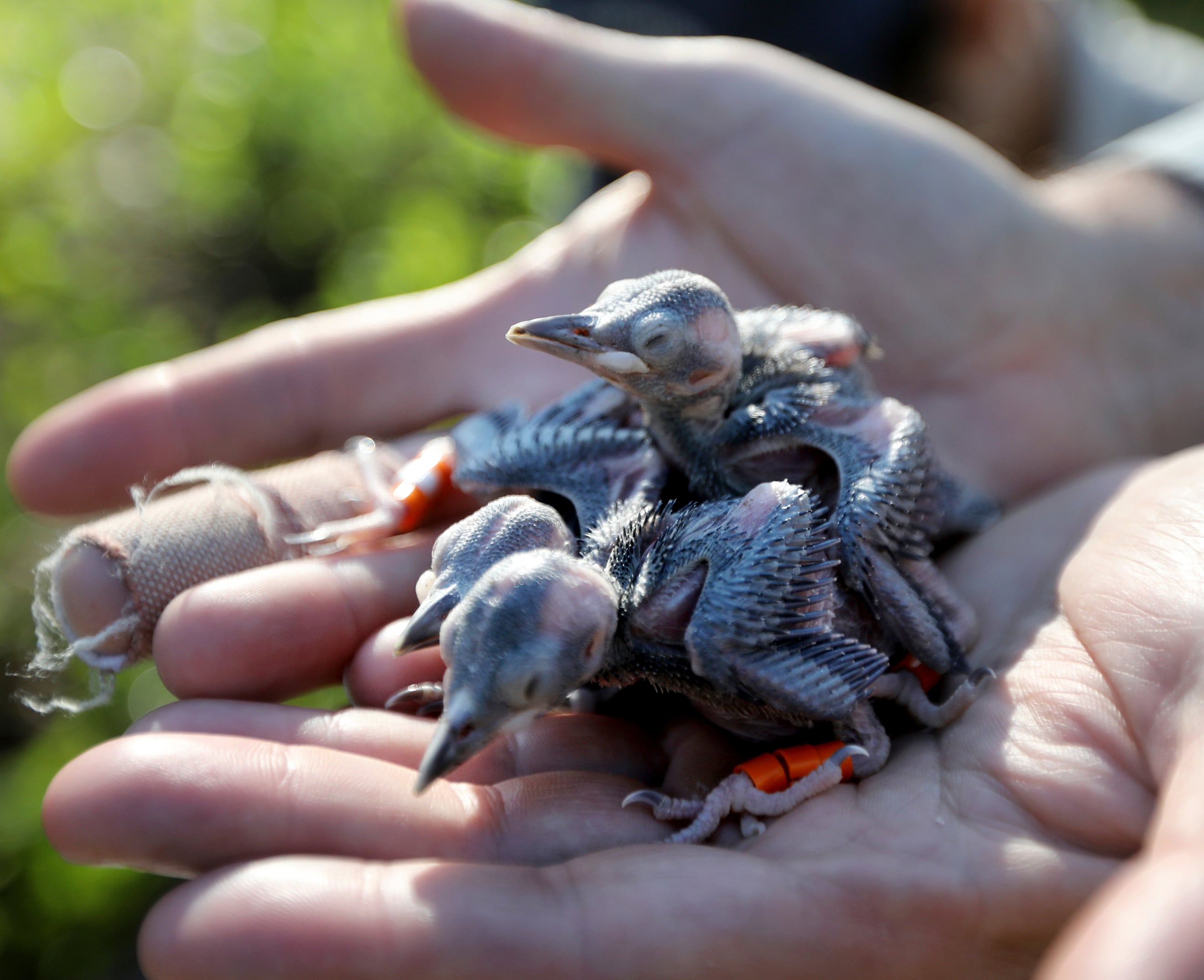
And the tree was useful — perhaps too much.
In Hampton Roads, it helped build the region into what it is possibly best known for today: a Navy powerhouse. Filled with resin and perfect for ship's masts, the tree provided materials for the shipping industry. The sap was made into pitch that could coat ships. The timber was easy to harvest at virtually any time of the year.
"Industries developed around removing that tree," said Wilson, a regional supervisor for the Virginia Department of Conservation and Recreation. "It's the tree that built Tidewater."
And with the growth of big cities in New England, many of the factories in the region were built with timber that came from longleafs in Virginia because they were monster, straight trees that could yield huge beams, Wilson said. It can reach 130 feet in height.
"These things produced lumber that is largely unparalleled," said Sam Lindblom, a fire manager with The Nature Conservancy, an independent nonprofit. "There are some white oaks in places that can compare, but there are almost no other species that are quite as durable or as easy to deal with as longleaf pine in its full glory."
Beyond its significant value, two other major factors led to its rapid decline. Settlers started extinguishing the fires needed for it to thrive, leading to less land where it could grow. And there was no regulation for keeping livestock. Hogs would roam free and eat longleaf pines when they were young as the "big starchy roots were a goldmine" for the animals, Lindblom said.
Experts likened the tree's story to that of the bison. Once viewed as limitless, both were harvested at an unsustainable rate. Wilson, who is a 13th generation Virginian, mused that her family probably contributed to the decline.
Within a couple of hundred years, early Americans wiped out its population essentially to Texas.
Virginia was the worst of the bunch.
"We were down to about 200 (mature) individual trees. Not even acres — trees," said Bobby Clontz, southeast Virginia land steward for The Nature Conservancy. "Those were concentrated in just a couple of areas" — mainly around western Suffolk.
And as it disappeared, so did its live-in woodpecker, always lagging behind. In 1950, the bird nested in 20 sites. Two decades later, that dwindled to seven.
"It was sheer loss of habitat," Lindblom said.
By 2002, roughly a dozen woodpeckers remained.
Today, longleaf pine still exists down to Texas. But instead of stretching across large swaths of land, it pops up in patches.
The conservation effort for Virginia’s longleafs — often mistaken for the similar-in-appearance loblolly pine — started to heat up after a Department of Forestry study revealed a concerning fact: Over centuries, pines in different parts of the range evolved with different genetics.
If seeds from an Alabama longleaf are planted in Virginia, they will sprout to be weaker, smaller and won't reproduce well, the study found.
Researchers and conservationists worried: If Virginia's longleaf disappeared, it would essentially be gone for good.
Near the turn of the century, an effort to save the pines began with agencies like the state departments of forestry, conservation and game as well as The Nature Conservancy. Each year, they collected tens of thousands of seeds from the remaining Virginia longleafs to plant later.
But the recovery effort really started with fire.
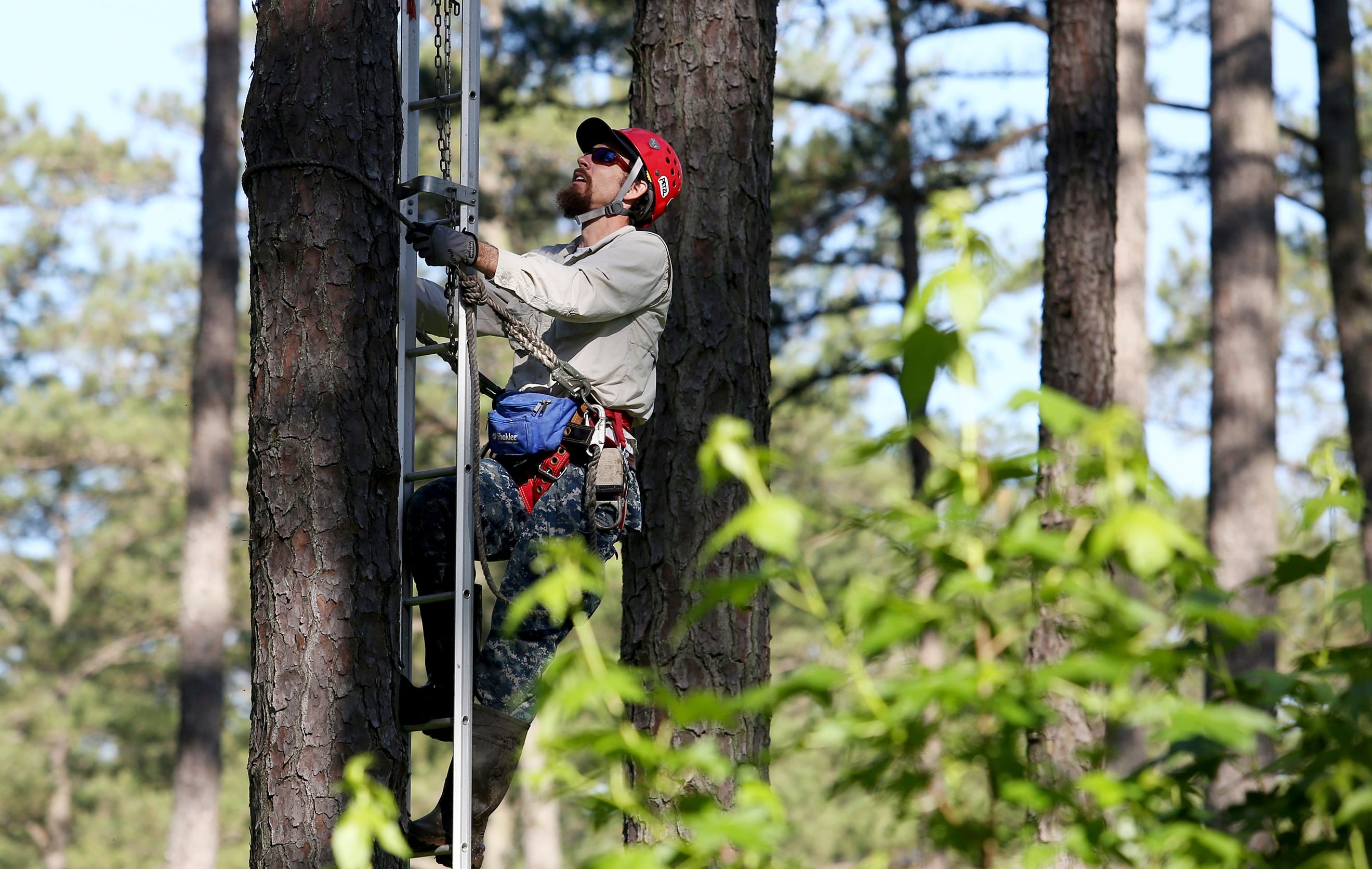
Wilson pulled her phone from her pocket and played a video of a recent burn: The flames torched many of the plants in the area, including young loblolly pine, but they rolled over the 2-year-old longleaf, its needles bright green among the charred earth. On the ground, the terminal bud, the primary growing point located at the top of the stem, is protected by the tree’s needles, which are full of moisture.
And then after a fire, the longleaf bolts up. It grows as much as 3 feet in a single year, Clontz said.
Lindblom cranes his head upward, demonstrating how the tree tries to get its "neck" above a certain height before the next blaze comes.
"Its strategy is to get from there to here as soon as humanly — or vegetatively — possible," said Lindblom, The Nature Conservancy's fire manager. "It's like, 'Hurry hurry hurry hurry hurry — ah, now I'm breathing easier.'"
Experts are not sure exactly why the fire sparks rapid growth — maybe it's the additional nutrients or the heated soil. Either way, it's the perfect time to grow because there is no fuel for the next fire, Clontz said.
For many, it seems like the love for longleaf stems from how the tree handles blazes.
"This tree can handle so much more — and thrive — in a really harsh setting," Wilson said.
Twenty years ago, conservationists started applying fire to Piney Grove, a nature preserve a few miles south of Chub Sandhill that is owned by The Nature Conservancy, Lindblom said. Typically, they plan burns two years after the seedling has been planted. Driving through the habitat in Clontz's white pickup, it's easy to see the evidence of past fires in the burnt trunks among the many trees.
The fire process starts with studying the ecology of the place. For a pine savanna, they aim to burn it every two to five years — what they call a frequent fire regimen.
They bite off chunks at a time — about 150 acres today, maybe 30 tomorrow — using swamps and mowed lines to set boundaries. And then it's all about the operations. They must choose the right wind direction "so we don't blow smoke onto Route 460 or onto a nursing home," Lindblom said.
On the day of, a single "burn boss" is in control. A small test fire is set to ensure it's dry enough. Stephen Living, land and facilities manager with the Virginia Department of Game and Inland Fisheries, said the agencies maintain contact with the local fire department, county officials, the department of forestry as well as others.
Using drip torches to kick it off, some people in special fire equipment run around while others ride on little off-road vehicles.
"We basically just light the place on fire. It sounds nuts, but it's very controlled. In fact, what we always say: 'It is a spectacular non-event,'" Lindblom said. "When you light this place on fire, you come out here and you're like, 'Holy (expletive), this place is on fire.' That's the spectacular part. It's moving through woods. It's crazy. But it's a non-event."
They might take some precautions for the animals, like raking around a woodpecker's tree to remove some of the available fuel, but they largely just leave them be.
"Any animal that lives in this system, whether it is red-cockaded woodpeckers or anything else, fire is part of the deal," Lindblom said. "And they're well aware of that and have a strategy for it."
There might be some short-term negatives, like a turkey's nest being burnt, but the habitat to support the animal will be stronger because of it, he said. When it's over, the team assesses how it went.
And then they do it again.
Plant, plan, burn. Repeat.
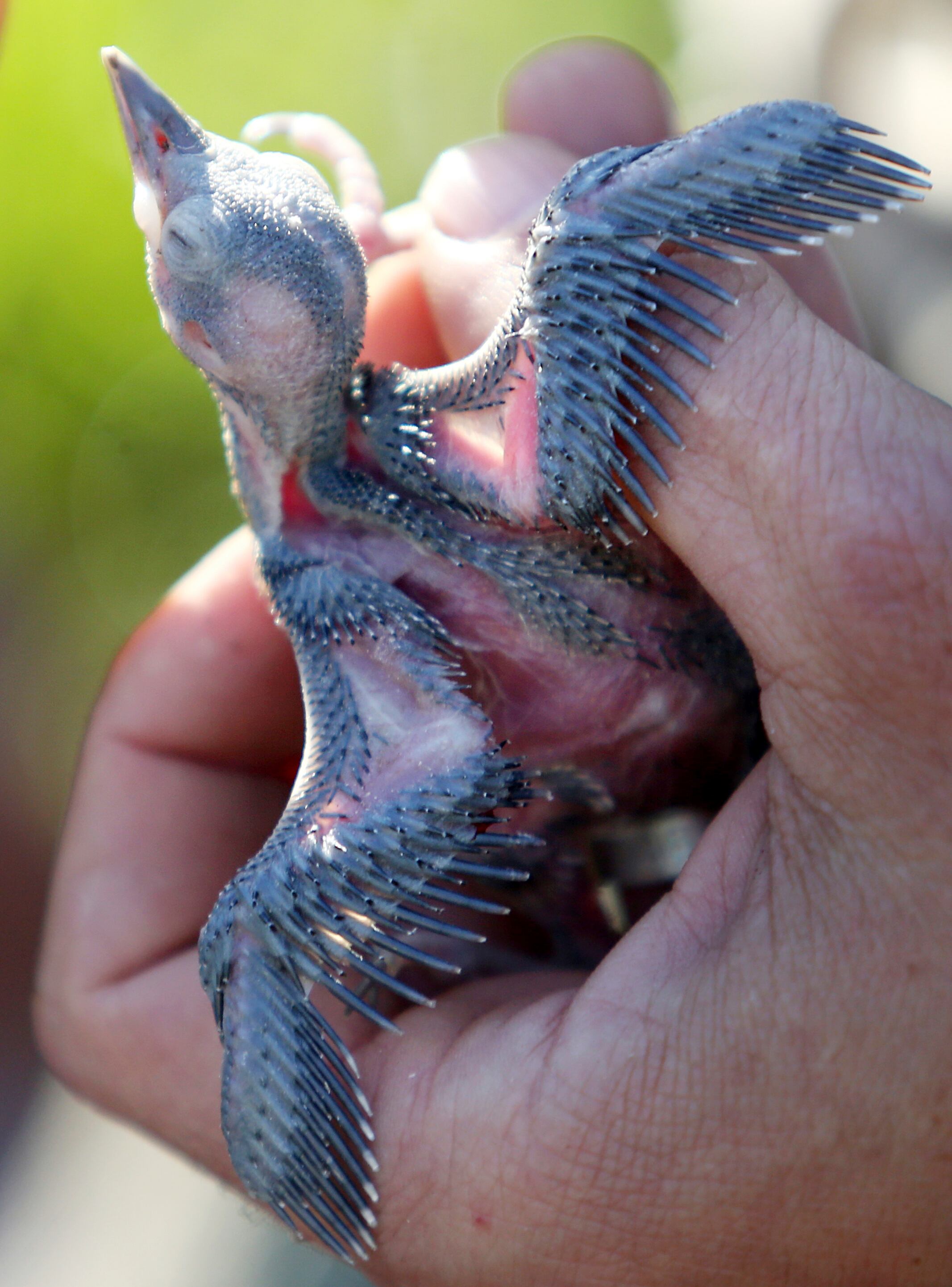
Fire season starts in January and wraps up in June. It begins again in July and continues through September. And, sounding very much like in-control pyromaniacs, it seems like the conservationists love every second of it.
"If the sun is shining this time of year, and we're not burning," Lindblom said, "then we messed up."
Over the past decade and a half, experts have learned that the health of Virginia's most endangered bird is truly tied to the well-being of its founding forest — for better or worse.
As habitat shrank, the birds were essentially kicked out of the remaining cavity trees. They prefer a clean glide path from their nest, allowing them to swoop down uninterrupted by other invading hardwoods. Without regular blazes, competition shot up, their prey became more scarce and predators more common.
"The loss of fire, and the loss of the open savanna, is straight up the reason why those birds essentially blinked out of existence here," Lindblom said, standing in Piney Grove. "This was the only place where there was enough of it, and it was marginal enough, that they could hold on."
The Nature Conservancy bought the preserve around 1998 when it was home to the only site for the birds in the entire state. Around 2002, the red-cockaded woodpecker's population bottomed out.
"It's unfortunate that it got down to the low level that it's at now," Clontz said, driving out of the nature preserve. "And there's still a lot left to do. There is certainly some disappointment that the rate of restoration can't go further."
The aim is not to interfere with them, though he still has to do a lot of hands-on work with the birds, said Clontz, who started working with the nonprofit about a dozen years ago and is the preserve manager at Piney Grove.
But the focus is on providing a place to live.
"If you have enough of the right habitat, that's the most efficient way to do wildlife conservation," Living said. "Putting your hand on a lot of individual animals is expensive and it's time-consuming."
"And we're generally wrong," Lindblom chimed in.
In Piney Grove, they concentrated on applying fire, planting longleaf and harvesting timber to get the tree density closer to what it should be.
"It was like a lag period . . . then, the birds started to respond," Lindblom explained. "They said, 'Oh, we have more habitat and we'll invest in a new cluster of cavity trees over here.'
"The more we expand the habitat, the more they move in."
Today, the Piney Grove preserve is the stronghold for red-cockaded woodpeckers in Virginia — if one exists. The latest count shows roughly 70 adult woodpeckers there, an increase from the turn of the century, though still a dangerously low number.
Officials are hoping to stay the course in the coming years. Above all, they're managing for longleaf because it's the keystone species that allows the rest of the rare plants and animals to thrive.
When the state's Department of Conservation and Recreation bought the Chub Sandhill preserve in 1996, the field used to be full of soybeans.
The hill is now packed with longleaf — what Wilson describes as her "baby."
"The rest we just conserve," she explained. "We're not gardeners. We are providing a suitable habitat for rare plants."
RELATED
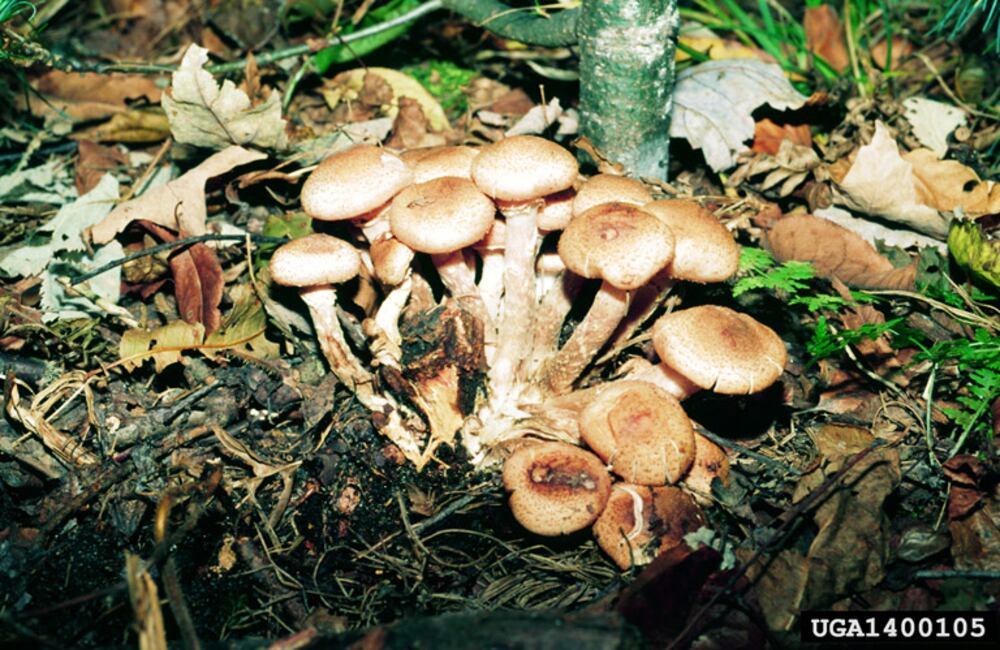
In the coming years — for the first time this century — there might be cones from new, Virginia-planted longleafs.
"Even being able to see this much in my lifetime, I basically feel like the people building cathedrals in the Middle Ages must have felt," she explained. "You're doing your own little part."
Over the past decade and a half, the sandhill has become the possible mecca for Virginia longleaf. While the tree can grow in different environments, it does best in harsh systems.
The poor soil, lack of water and incredible heat that it emanates make it an ideal scenario for a longleaf pine sandhill. If it rains there in the morning, it'll be dry enough to burn at night, Wilson said.
And because of her efforts, there are already 1,000 more acres of trees on the ground.
On other state-owned lands, the planting has sped up quickly over the past several years, like at the Big Woods State Forest and Wildlife Management Area in Sussex County. The recovery on private lands is finally starting to catch up, too.
Virginia's longleaf has experienced a massive rebound, now covering up to 8,000 acres in the southeastern part of the state.
While the individual trees might not need fire to grow, it's essential for the ecosystem to flourish.
And, most importantly, the woodpecker.





